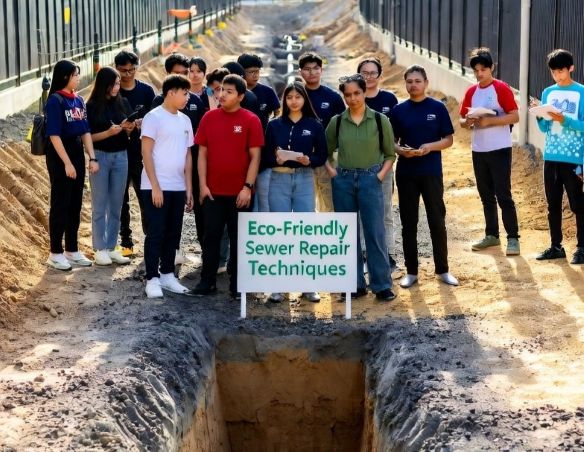Pipes and Purpose: Teaching Sustainability Through Real-World Infrastructure Projects

Modern cities depend on underground systems that most people rarely think about. Sewers, pipelines, and drainage networks quietly sustain life above ground, ensuring that communities stay clean and healthy. Yet, these same systems can also become powerful teaching tools for students learning about sustainability, engineering, and environmental responsibility. Schools and universities today are finding creative ways to bridge classroom theory with real-world impact by exploring eco-friendly sewer repair techniques as part of their curriculum.
One example gaining attention is Sewer Relining or relining riool, a method that repairs damaged pipes without digging up streets or disrupting entire neighborhoods. This approach uses resin-coated liners inserted into old pipelines to create a new, durable surface inside. The process minimizes waste, reduces environmental damage, and saves energy by eliminating the need for large-scale excavation. It’s a perfect example of how modern technology can combine efficiency with sustainability, offering students a firsthand look at innovation in action.
Learning Sustainability Beyond the Textbook
Students often learn best when they can see, touch, and experience what they are studying. Environmental engineering programs and vocational schools are starting to use sewer repair projects as hands-on learning models. Through guided tours, virtual simulations, and partnerships with local maintenance companies, students gain insight into how infrastructure can be managed responsibly. These real-world experiences show how sustainable methods can solve long-standing urban problems while teaching valuable lessons about resource management and innovation.
By connecting with companies that specialize in sustainable repair methods, schools can enrich their environmental education programs. Such collaborations also encourage young learners to think critically about the balance between development and conservation. When students witness the benefits of eco-friendly systems firsthand, they begin to understand how engineering decisions affect both people and the planet.
Community Outreach and Charity Initiatives
Beyond classrooms, these educational partnerships can extend into community outreach programs. Schools can team up with local councils or nonprofit organizations to promote sanitation awareness, clean water initiatives, and public health campaigns. Students can organize workshops that explain how small technological innovations, like relining pipes, can lead to major environmental benefits. Charity drives can also support areas with outdated sewer systems, promoting both education and service at once.
Clean water access is still a major challenge for many communities worldwide. Encouraging students to engage in real-world sustainability efforts helps them grasp the human side of engineering. It gives them purpose beyond technical knowledge and builds empathy for those affected by poor sanitation. A curriculum that blends theory with service learning prepares the next generation of problem-solvers to take meaningful action.
Why Eco-Friendly Sewer Projects Matter
Eco-friendly sewer repair is more than a technical upgrade, it’s a lesson in long-term thinking. Traditional excavation projects can release carbon emissions, consume large amounts of fuel, and cause severe disruption to ecosystems. In contrast, sustainable techniques like Sewer Relining use fewer materials and produce less waste. Students who study these methods can learn about life-cycle analysis, project efficiency, and urban sustainability planning. These are vital skills for engineers and environmental scientists shaping the future of cities.
Teachers can also use sewer relining projects as interdisciplinary lessons. They combine physics, chemistry, and biology with social studies and ethics. Students can analyze water flow systems, study how pollutants affect ecosystems, and discuss the importance of equitable infrastructure access. These discussions inspire critical thinking while nurturing a deep respect for environmental stewardship.
READ ALSO: How HVAC Services Can Support Educational and Charitable Institutions
From Education to Real Impact
When sustainability becomes part of everyday learning, its impact multiplies beyond the classroom. Students who understand eco-friendly infrastructure methods can advocate for cleaner, smarter communities. They may later pursue careers in green engineering, environmental science, or urban planning, carrying their early lessons into professional life. More importantly, they become ambassadors of change who inspire others to care about responsible development.
The idea behind Sewer Relining isn’t just about repairing pipes, it’s about building awareness. Every repaired pipeline represents reduced carbon output, fewer wasted resources, and a step toward a more resilient environment. By teaching sustainability through real-world infrastructure, educators are planting the seeds for a cleaner, smarter future where innovation meets purpose.
In the end, teaching through infrastructure projects like Sewer Relining allows students to see that sustainability isn’t abstract. It’s practical, measurable, and essential. When young people learn how simple innovations can protect vital resources like water, they develop a lifelong appreciation for the planet. That is education with real purpose, flowing as clearly as the clean water it helps preserve.